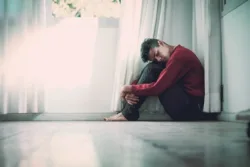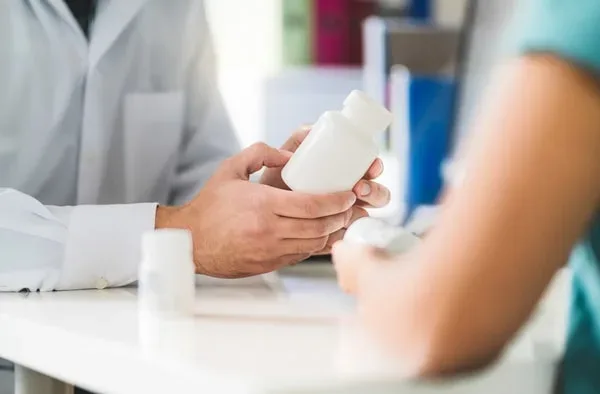
Depression is a mental health disorder that affects an individual’s mood and energy levels. It often interferes with everyday tasks and normal functioning. If left untreated, it can even lead to death by suicide.
Depressive disorders are a complex area of mental health. Researchers are still trying to figure out what causes depression, but there are many different risk factors that have been identified, including genetics, a history of trauma, and substance abuse.
Do you suspect you or a loved one has depression? Are you unsure what type you have? Here is an overview of the different kinds of depression.
Major Depressive Disorder
When most people speak of depression, they are likely thinking of a particular disorder known as major depressive disorder (MDD) or clinical depression. This is characterized by frequently depressed moods, among other symptoms, such as:
- Low energy
- Feeling worthless or guilty
- Trouble concentrating
- Sleeping too much or too little
- Loss of interest in normal activities
- Weight loss or gain
- Feeling restless
- Thoughts of death or suicide
In order to diagnose MDD, these symptoms must be experienced at least once a day for two weeks or more at a time.
Persistent Depressive Disorder
Persistent depressive disorder, also known as dysthymia, is often confused with major depressive disorder because the symptoms are almost the same. However, there are key differences.
While major depressive disorder can come and go in the form of major depressive episodes, persistent depressive disorder (PDD) is marked by a nearly constant state of depressed mood for at least two years.
Additionally, many people with PDD do not meet the criteria for major depressive disorder because their symptoms are not intense enough to interfere with their functioning. In fact, someone with PDD may seem fine on the outside. They may function well at work or school, even though they are experiencing these symptoms.
Bipolar Disorder
Bipolar disorder, also called bipolar depression or manic depression, is characterized by mood swings. Individuals may experience depressed moods as well as periods of mania where they have increased energy and elevated mood. They can also go through a less severe form of mania called hypomania.
There are three different types of bipolar: Bipolar I, Bipolar II and Cyclothymia.
- Bipolar I: Consists of at least one manic episode, and may include depressive episodes as well, but it doesn’t have to.
- Bipolar II: Diagnosed by a depressive episode that lasts at least two weeks, and a hypomania episode that lasts at least four days.
- Cyclothymia: Consists of both depressive and hypomanic episodes that are less severe.
Psychotic Depression
Psychotic depression is used to describe symptoms of major depressive disorder combined with psychotic episodes. Psychosis includes auditory or visual hallucinations as well as delusions (false or irrational beliefs). People with psychotic depression may also display a paranoid attitude.
Situational Depression
Situational depression is not technically a depressive disorder since it is triggered by a negative life event and is often short-term rather than chronic. Still, people suffering from situational depression may benefit from mental health care. If you recently experienced a loss or major change (death, divorce, job loss, health problems, etc.) and are having trouble coping, talk to your doctor. It could be situational depression.
Atypical Depression
If you display the symptoms of major depressive disorder but experience temporary relief from positive experiences in your life, you may have atypical depression. The key feature that distinguishes it from MDD is the fact that mood improves with positive events. People with MDD tend to feel depressed despite positive external circumstances.
Atypical depression also has some distinctive symptoms like increased sensitivity to rejection or criticism and a heavy feeling in the arms and legs.
Postpartum Depression
New parents may experience symptoms of depression after the birth of a child. Most people associate postpartum depression (PPD) with women, but it can also occur in men. PPD is distinct from normal sadness that occurs after the birth of a new baby, often called “the baby blues.”
Postpartum depression manifests differently in women and men. In addition to common signs of depression, women may experience these symptoms:
- Feeling disconnected from the baby
- Feeling as though they are not the mother
- Not having an interest in their baby
- Thoughts of hurting themselves or their baby
- Feeling like a bad parent
In contrast, men tend to experience more irritability and anger. They may behave aggressively, use drugs or alcohol, and complain of physical aches and pains.
If you experience any of these symptoms and they last for longer than two weeks, seek treatment. Postpartum depression can impact your ability to care for your child.
Premenstrual Dysphoric Disorder
Some women experience depression associated with their menstrual cycle. Premenstrual dysphoric disorder (PMDD) causes symptoms around the start of a woman’s period. This is often accompanied by the symptoms of premenstrual syndrome (PMS) such as cramps, bloating, irritability, and mood swings.
The premenstrual dysphoric disorder is likely triggered by hormonal changes during a woman’s menstrual cycle. While it is normal to experience some symptoms around this time of the month, women should seek advice from a doctor if they find the symptoms interfere with their normal functioning.
Seasonal Affective Disorder
Seasonal affective disorder (SAD) is triggered by the change of seasons. Most people experience symptoms in the fall and winter, but it can also occur in spring and summer. For most people with SAD, the decreased sunlight in the winter causes a drop in serotonin levels that triggers symptoms of depression. Some people may also find that their melatonin levels become unbalanced, which can lead to increased or decreased sleep.
Individuals with SAD experience many of the same symptoms of major depressive disorder, including depressed mood, low energy, loss of interest in activities, trouble concentrating, and even suicidal thoughts. This form of depression is recognizable by the distinct pattern of depressive moods. If your symptoms seem to correlate with the seasons, you may have seasonal affective disorder.
Treatment for Depression
All types of depression can be managed with proper treatment. This may include medication, therapy, or a combination of both. If your depression doesn’t respond well to traditional therapies, there are alternative treatments available, such as light therapy, electroconvulsive therapy (ECT), and transcranial magnetic stimulation (TMS) therapy. Your doctor may also recommend healthy lifestyle changes (diet and exercise) in addition to mental health treatments.
Note that some depression symptoms can be caused by an underlying medical condition. Your treatment provider may suggest a physical exam and lab tests to rule out a physical cause.
If you or a loved one is experiencing symptoms of depression, don’t hesitate to reach out for help. With proper treatment, you can experience symptom relief and improve your quality of life.
Looking for Depression Treatment in Eastern Pennsylvania?
The Light Program offers mental health treatment at several locations. Our programs include group, individual, and family therapy, holistic therapies, and access to on-staff psychiatrists for medication management.
References:
https://www.verywellmind.com/depression-facts-you-should-know-1067617
https://www.healthline.com/health/types-of-depression
https://www.webmd.com/depression/guide/depression-types#1
https://www.webmd.com/depression/guide/major-depression#1
https://www.webmd.com/depression/guide/causes-depression#1
https://www.healthline.com/health/dysthymia-vs-depression
https://www.verywellmind.com/common-types-of-depression-1067313
https://www.healthline.com/health/bipolar-disorder#types
https://www.webmd.com/depression/guide/atypical-depression#1
https://www.womenshealth.gov/mental-health/mental-health-conditions/postpartum-depression
https://www.psycom.net/postpartum-depression-in-men
https://www.helpguide.org/articles/depression/depression-treatment.htm






